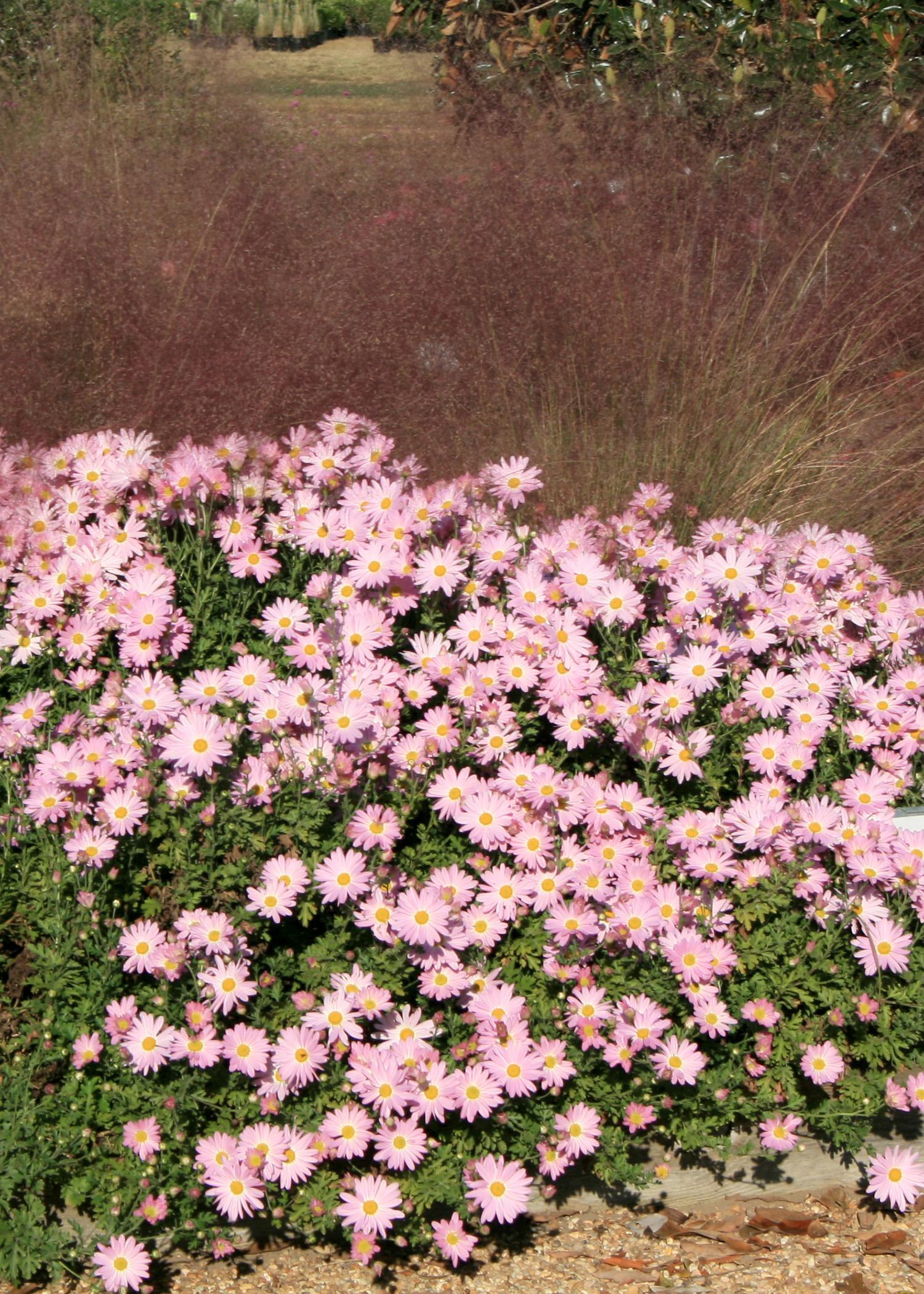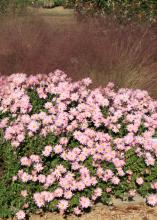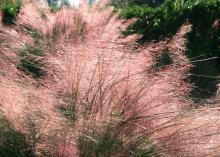Information Possibly Outdated
The information presented on this page was originally released on October 28, 2013. It may not be outdated, but please search our site for more current information. If you plan to quote or reference this information in a publication, please check with the Extension specialist or author before proceeding.
Pink Gulf muhly grass offers a fall color treat
Gardeners don’t always think of native grasses as a landscape highlight, but fall is the time when one really puts on a show. Gulf muhly grass is at its best in the fall and winter months.
Gulf muhly grass has a unique texture with spiky, upright leaves that offer summer interest. But it’s the plant’s last grand flourish that creates true landscape excitement. Muhly grass flowers in billowy masses that resemble pink clouds in the landscape. As long as there isn’t a hard freeze, the color will hold. Even after a freeze, the flower heads keep their airy shape.
A planting at the Coastal Research and Extension Center in Biloxi is truly gorgeous on any sunny, fall morning. The rising sun backlights the Gulf muhly grass, making it seem to glow in the rich, morning light. Anyone seeing this display can recognize the significant impact landscape grasses have in the winter.
Many visitors to the annual Fall Flower and Garden Fest in Crystal Springs marveled at the long-standing combination of Gulf muhly grass and the heirloom chrysanthemum Clara Curtis.
Now is a great time to plant this native grass, which was chosen as a Mississippi Medallion native plant winner in 2010. Select a landscape site that receives at least 6 hours of full sun. Turn over the soil, working in at least 3 to 4 inches of quality compost. Always set the plants a little bit higher than the native grade of the landscape bed. This practice aids drainage and is always a good idea in Mississippi landscapes and gardens.
Consider spacing needs carefully. While a mass planting of Gulf muhly grass is gorgeous, these plants need their individual space. Plants can grow up to 4 feet wide, so place them 3 feet apart in the landscape. This spacing will achieve that filled-in, mass look.
Like all ornamental grasses, there is really only one maintenance step that you must not neglect. In late winter, cut the grass clumps back to 6 inches tall before spring growth starts. This trimming clears the way for the new foliage and results in a nicely formed clump.
Don’t be tempted to cut them back any earlier than this. If you do, you’d remove the dried flower stems that create movement with the wind and habitat for wildlife.
Gulf muhly grass has had an important role in the history of the Southeast, primarily in the Charleston, S.C., area. In the antebellum South, slaves harvested the long, wiry grass blades and used them, along with other native plant materials, to weave sweetgrass baskets. This basket-making practice continues to this day.
Other species are all called muhly grass and have similar landscape performance, but most of these have white flowers heads. A lot of garden centers will lump these all together and call them muhly grass. It really does not matter what it is called, but muhly grass should be in your landscape.
Just remember it’s the Gulf muhly grass, Muhlenbergia capilaris, that has the pink flower heads.









